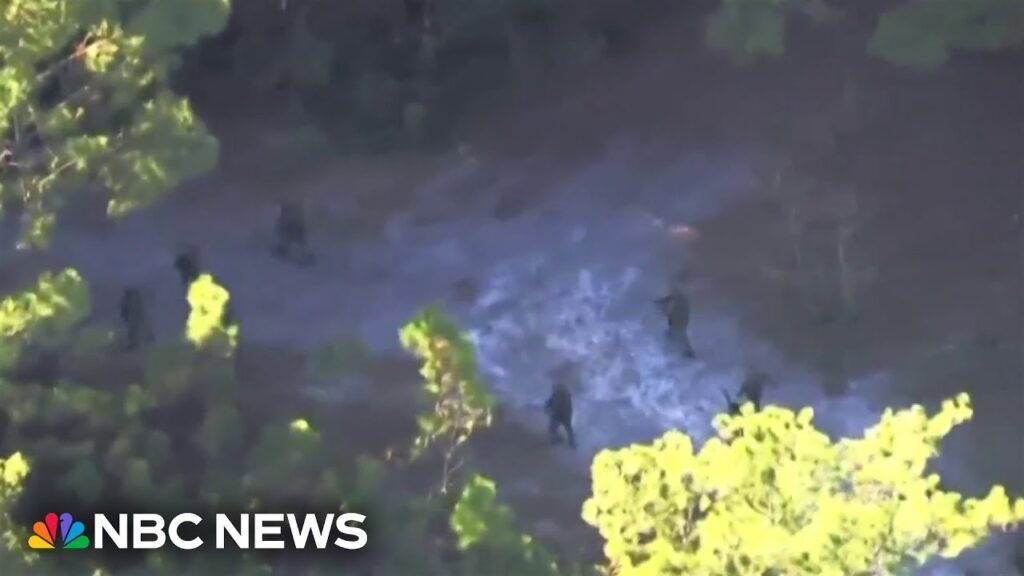In this dramatic sequence of events, a man in Florida finds himself pursued by authorities through dense swamp terrain in a search that lasted roughly 36 hours. The chase, which began after law enforcement located him in connection with an earlier incident, evolved into a foot pursuit across challenging wilderness in which the fugitive attempted to evade capture.
According to reports, deputies encountered the 37-year-old suspect when responding to a call in a remote area. Unable or unwilling to surrender, the suspect made a sudden decision to flee on foot, plunging into the surrounding marshlands and thick vegetation. The terrain quickly became a complicating factor: swampy ground, limited visibility, and natural obstacles all served to slow law enforcement—and to extend the pursuit far beyond typical searches. YouTube+2Facebook+2
As the hours ticked by, the pursuit transitioned from a standard manhunt into an extended survival scenario. The suspect moved through the swamp at night, trying to avoid detection, while deputies marshalled resources to track him. Search teams had to contend with the elements, unpredictable terrain, and the possibility of the fugitive trying to hide for extended periods. The marsh environment, with its murky water, dense brush, and minimal trails, meant that typical tracking methods had limited effectiveness.
In many ways, the scene evokes the image of a backwoods drama: one man versus nature, with law enforcement closing in. But the stakes were real. Each hour brought risks—not only to the fugitive, but to the pursuing officers as well. Hypothermia, dehydration, animal encounters, or injury from invisible hazards underfoot all become possible in such a prolonged outdoor pursuit.
On the law-enforcement side, the extended timeframe forced a shift in tactics. Rather than a quick arrest scenario, this became a methodical search. Deputies likely deployed tracking dogs, aerial surveillance (if available), thermal imaging, and grid-style search patterns, all while maintaining safety for everyone involved. The swamp terrain likely impeded vehicles, so the majority of the chase was on foot or perhaps via specialized off-road or swamp-capable vehicles.

Eventually, after approximately 36 hours, law enforcement closed in and effected the arrest of the suspect. Exhaustion and the harsh environment likely played a role in bringing the chase to an end—both for the fugitive and for the pursuing officers. The arrest marks the conclusion of a rare and prolonged law-enforcement effort in off-road terrain.
Beyond the sheer length of the chase, the story strongly highlights several themes:
1. The power of terrain and environment in law-enforcement operations. What might have been a fairly standard pursuit in urban or suburban landscape became extraordinary once the swamp came into play. The natural obstacles increased the time, complexity, and danger.
2. Resource commitment and coordination. A 36-hour chase requires sustained effort: shifts of officers, logistical support for personnel (food, rest, medical readiness), and constant situational awareness. This sort of multi-day operation demands coordination across units.
3. Fugitive mindset and desperation. For someone to attempt to outlast authorities in such a harsh environment suggests a high level of desperation or belief that they might evade capture. At some point, the environment itself works against the fugitive—fatigue, exposure, and navigation difficulties begin to close in.
4. Risk management for law enforcement. Officers in remote or difficult terrain must balance the imperative to apprehend with the safety of their own team. In a pursuit of this duration, rotating personnel, monitoring for signs of heat or cold stress, and ensuring medical backup become critical.
From a viewer’s standpoint, this story is gripping not just because of the pursuit itself but because of the setting: the swamp adds visual and emotional drama. It’s the sort of story that blends “manhunt” and “wilderness survival,” making for compelling footage and narrative.
If you watch the video, keep in mind a few noteworthy moments:
- The initial moment when law enforcement made contact and the suspect fled into the swamp. That decision to flee into difficult terrain is the turning point.
- The shift in tactics: how searchers adapted when vehicles couldn’t follow, how they might have deployed different units, and how they navigated the marsh.
- The human dimension: both only from the fugitive side, but also how officers likely coped with fatigue, terrain hazards, and keeping the operation going through the night.
- The arrest moment: when it finally happened. The relief for law enforcement, the end of the fugitive’s bid to remain free, and the broader implications for community safety.
In summarizing the incident: a Florida man instigated a foot chase that extended through swamp terrain for around 36 hours before law enforcement was able to take him into custody. The unusual length and environment of the pursuit make it a standout case in modern policing—one that underscores how unpredictable real‐world situations can become when nature enters the equation.
If you’re interested in broader context, you might ask: How often do law-enforcement pursuits go on for more than a day? What safety protocols are in place for officers and suspects in remote terrain? How does the terrain (swamps, jungles, deserts) change the nature of a manhunt? These questions help situate this case within a larger understanding of policing and wilderness pursuit.
Here’s the video for you to watch and evaluate:
Watch on YouTube


